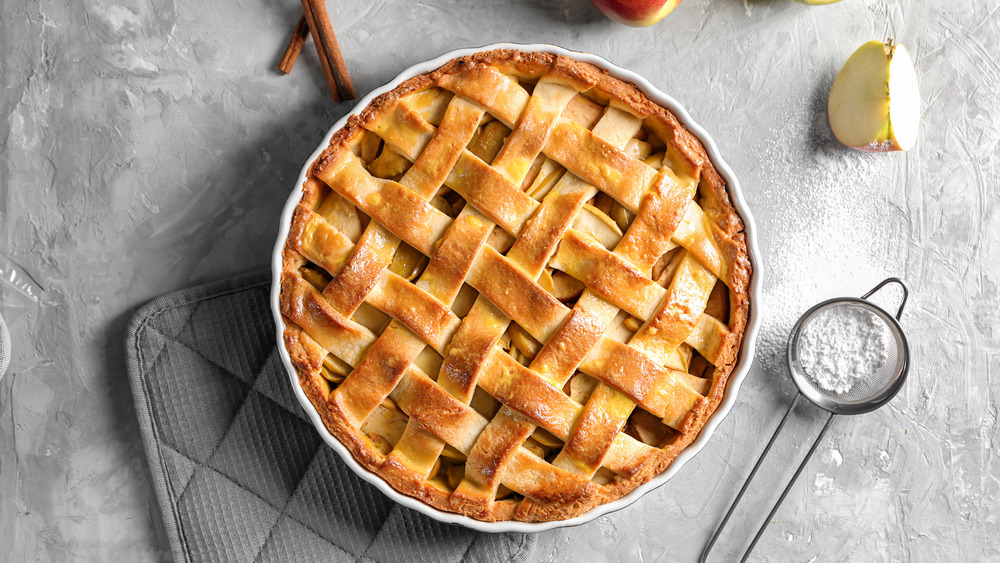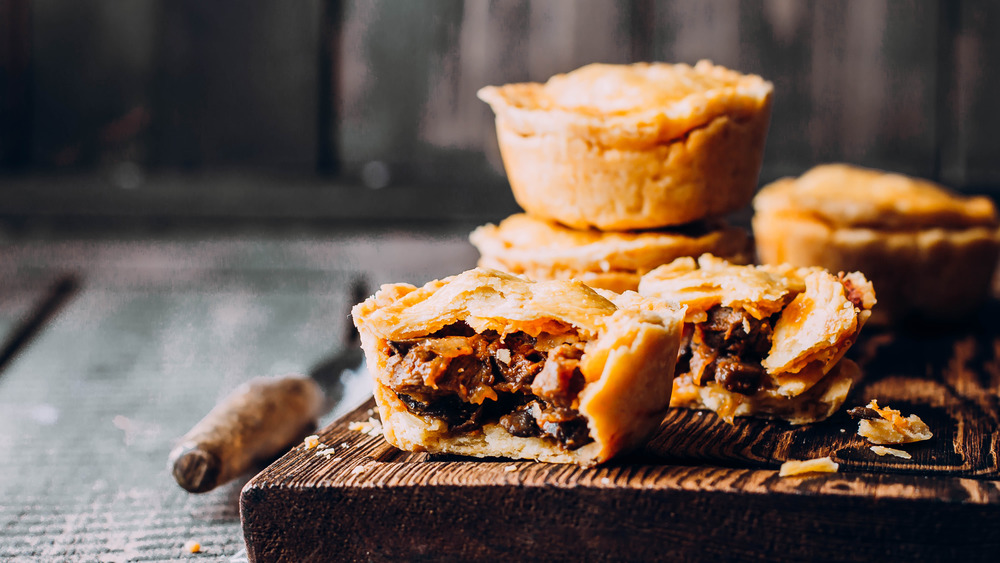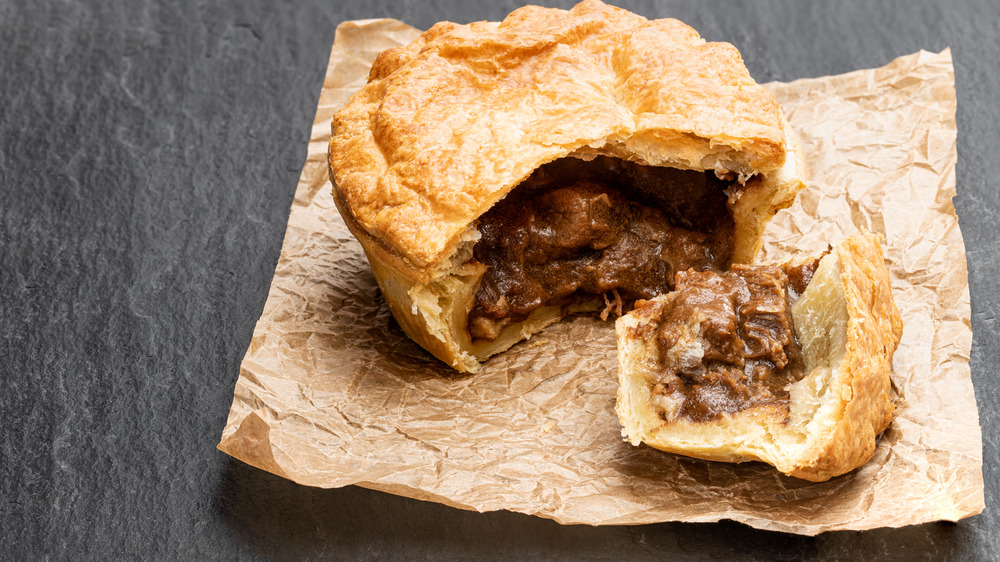Hot Water Crust Vs Traditional Pie Crust: What's The Difference?
Even if you've never painstakingly made your own pie before – meticulously combining all the ingredients, carefully rolling out the dough, and babysitting it while it bakes – you're probably familiar with the delicate, flaky crust every baker aims for. Getting a light and airy crust can be tricky though, and it usually involves at least a few tears in the dough as you're rolling out it and trying to transfer it to a pie plate. But when you replace the cold water in the pastry dough with hot, suddenly that delicate crust transforms into something much heartier and easier to work with.
According to Cook's Illustrated, to make a traditional flaky pastry for your favorite pie, you'll usually cut a cold fat into flour, then add cold water to help the dough come together. Butter is a common choice for pie crust, but this Food Network recipe also uses cold vegetable shortening for the fat. Which fat you use can definitely have an effect on the final crust, but the key is that it has to be cold, just like the water that gets added to the mix.
How hot water crust is different from traditional pie crust
According to Bon Appetit, the low temperature is what gives pie crust that signature flakiness that everyone wants. When the fat is cold, it steams as the crust bakes, producing air pockets in the dough which make it flaky. Using cold water and even cold tools helps keep the fat chilled while you work with the dough until it's time for it to go in the oven. When you use hot water to make pastry, you'll lose the flakiness but end up with a dough that's not quite as delicate.
While most pie crusts are light, flaky, and almost melt in your mouth, hot water crust is much sturdier. According to Cook's Illustrated, hot water crusts are actually one of the oldest variations of pastry out there. Instead of using a pie dish, hot water crust is strong enough to mold around a filling and bake without needing support from a dish to hold its shape. To make a hot water crust, instead of cold fat and water, boiling water is whisked together with the fat to create an emulsion, then added to flour. The resulting dough doesn't crack or tear nearly as easily, which makes it a lot more versatile than traditional pie crust.
The great British baking crust
According to Food52, hot water crust pastry is a lot more popular in Great Britain than it is in the U.S. Thanks to its strength, hot water crust can handle fillings that are a lot heavier or wetter than traditional pie crust, which makes it a good choice for meat pies or other recipes with savory fillings. A hot water crust usually has less flavor than a traditional pie pastry, but it's also a little crisper after baking, and a lot stronger – so strong that it'll hold its shape even after you take the finished product out of a baking pan.
You can also patch up a hot water crust much easier with spare pieces of dough if it tears while you're rolling it out, and you probably won't even notice the patch. So while it won't be flaky like a traditional pie, if you've struggled with pie crust before, it might be worth trying a hot water crust. Just make sure you've got a flavorful filling to balance out the crisp pastry.


